Bold color doesn’t have to feel risky in a baby’s space—used thoughtfully, black becomes a grounding backdrop that highlights texture, contrast and cozy serenity. Designers note that dark walls can actually make small rooms recede while showing off light-colored furnishings, and that paint choice matters as much for health as aesthetics. Studies on infant vision even show newborns responding best to high-contrast patterns, so a well-planned black nursery can be both stylish and developmentally engaging. Below, explore twenty fresh, practical ways to weave black into a nursery that feels safe, nurturing, and timeless. Let these ideas spark a space where calm nights, curious eyes, and beautiful memories can flourish.
1. Dramatic Black Nursery Accent Wall

A single matte-black wall behind the crib anchors the room without overwhelming it, creating instant depth and highlighting lighter décor. Opt for a low-sheen finish to soften reflections, and balance the darkness with creamy textiles and a pale rug so the space still feels airy. Remember crib safety: keep wall décor flat or firmly secured to avoid hazards, and position the mattress snugly against the slats.
2. Scandinavian-Inspired Monochrome Black Nursery

The clean lines of Scandinavian style pair effortlessly with black, white, and natural wood. Paint the lower two-thirds of walls charcoal and leave the top section bright white; the horizontal break makes ceilings look taller. Layer in birch shelves and a wooly sheepskin to keep things cozy rather than stark. High-contrast mobiles over the changing table stimulate baby vision while fitting the palette perfectly.
3. Celestial Night-Sky Black Nursery
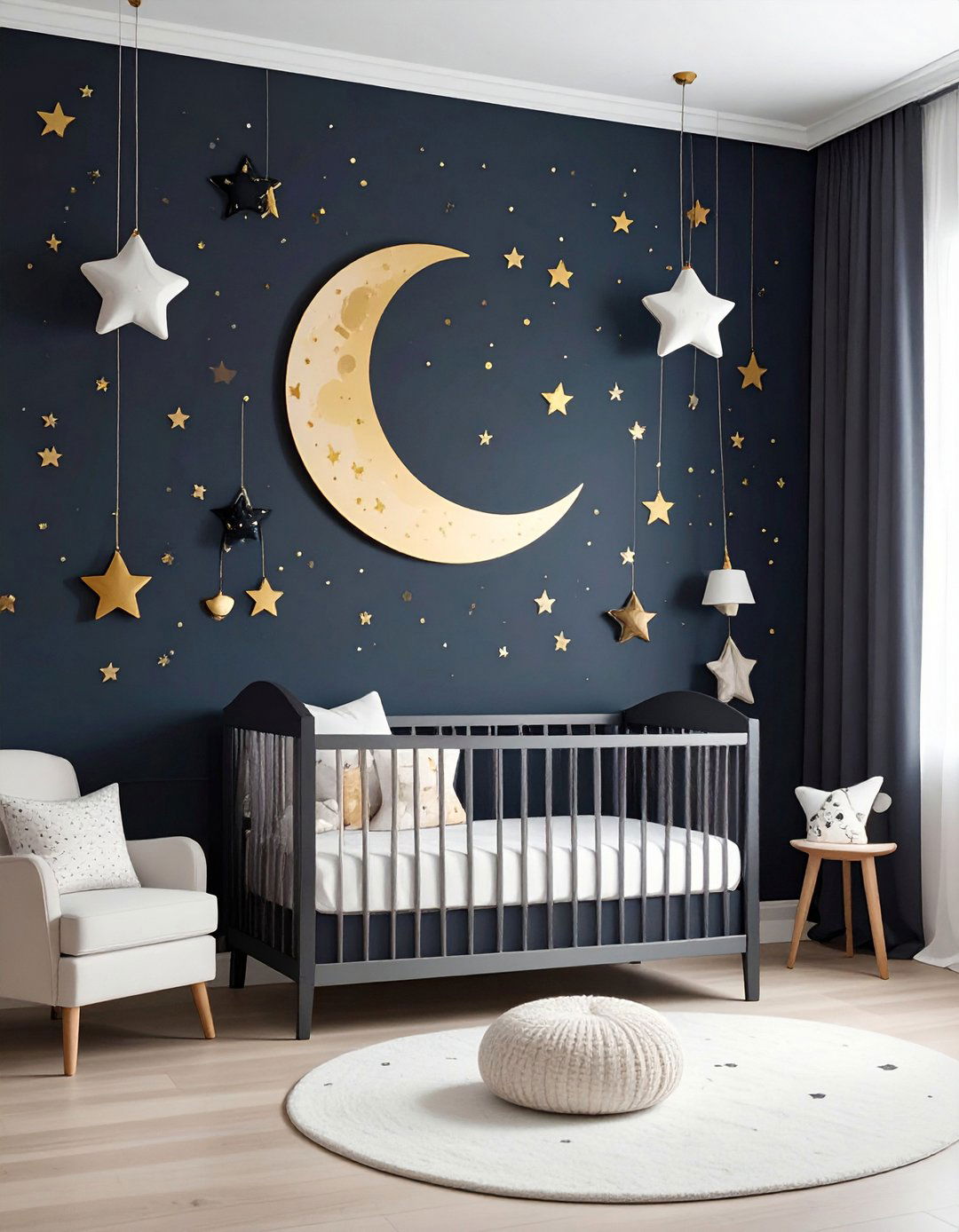
Deep-space walls dotted with tiny gold stars create an enchanting bedtime realm. Peel-and-stick constellations make future updates easy, and a dimmable warm-white sconce shaped like a moon reinforces the theme while supporting healthy circadian cues. Parents report that blackout surroundings can aid melatonin production and longer stretches of infant sleep, especially during early bedtimes.
4. Botanical Black Backdrop Nursery

Against black paint, oversized leafy decals pop with vivid contrast—perfect for a calming nature-driven nursery. Choose plant prints in soft greens to avoid overstimulation, and style lightweight bamboo shades that temper direct sunlight without eliminating it. Low-VOC, Greenguard-certified paints in rich soil-toned black add depth while keeping indoor air safer for sensitive lungs.
5. High-Contrast Learning Corner in the Black Nursery
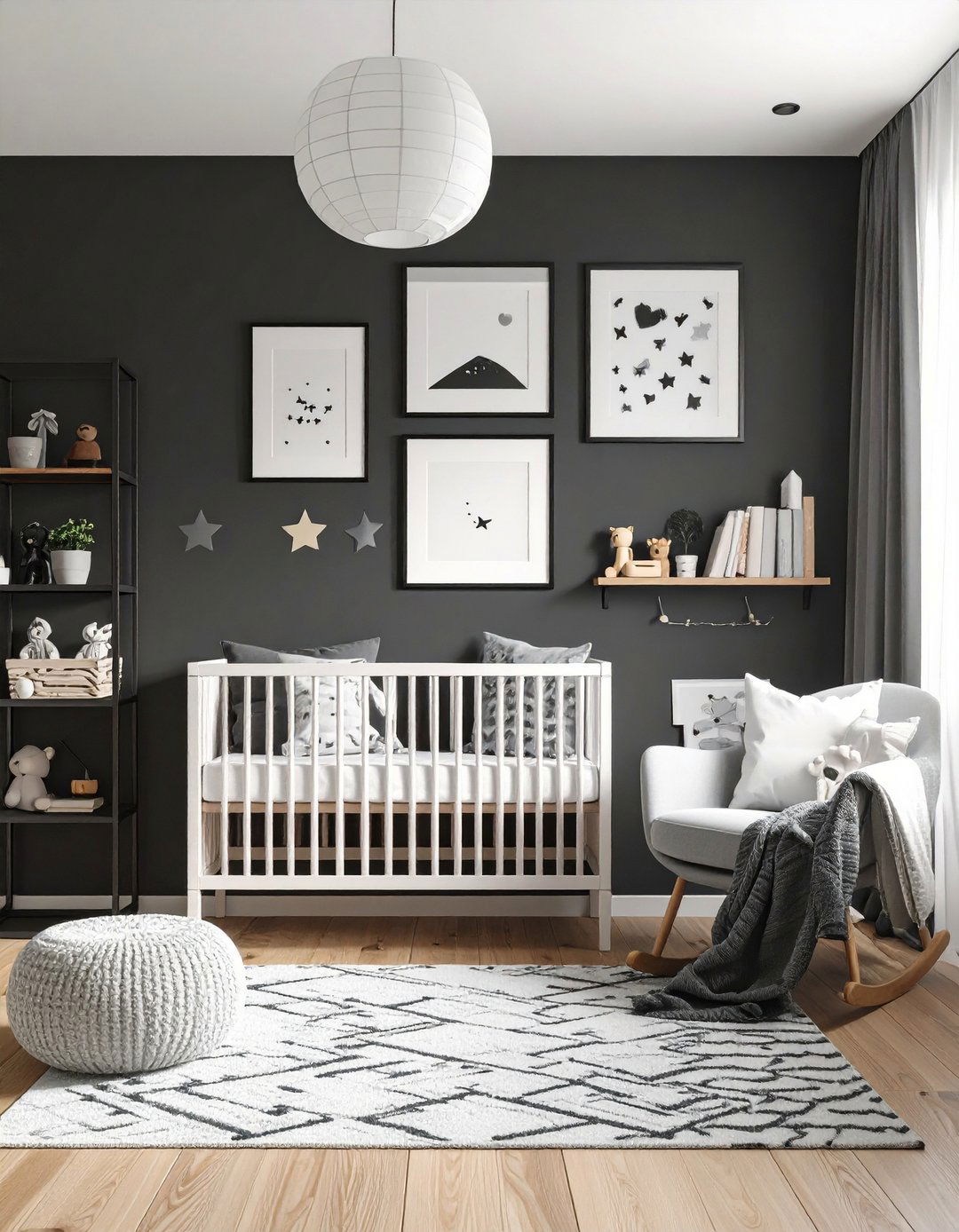
Set aside one wall for framed black-and-white stimulus cards arranged at baby’s eye level. Research shows that crisp contrast encourages early optic-nerve growth and longer focus times, laying groundwork for tracking skills crucial to reading later on. Rotate images every few weeks to keep curiosity high and cognitive pathways firing.
6. Glam Black-and-Brass Nursery Statement
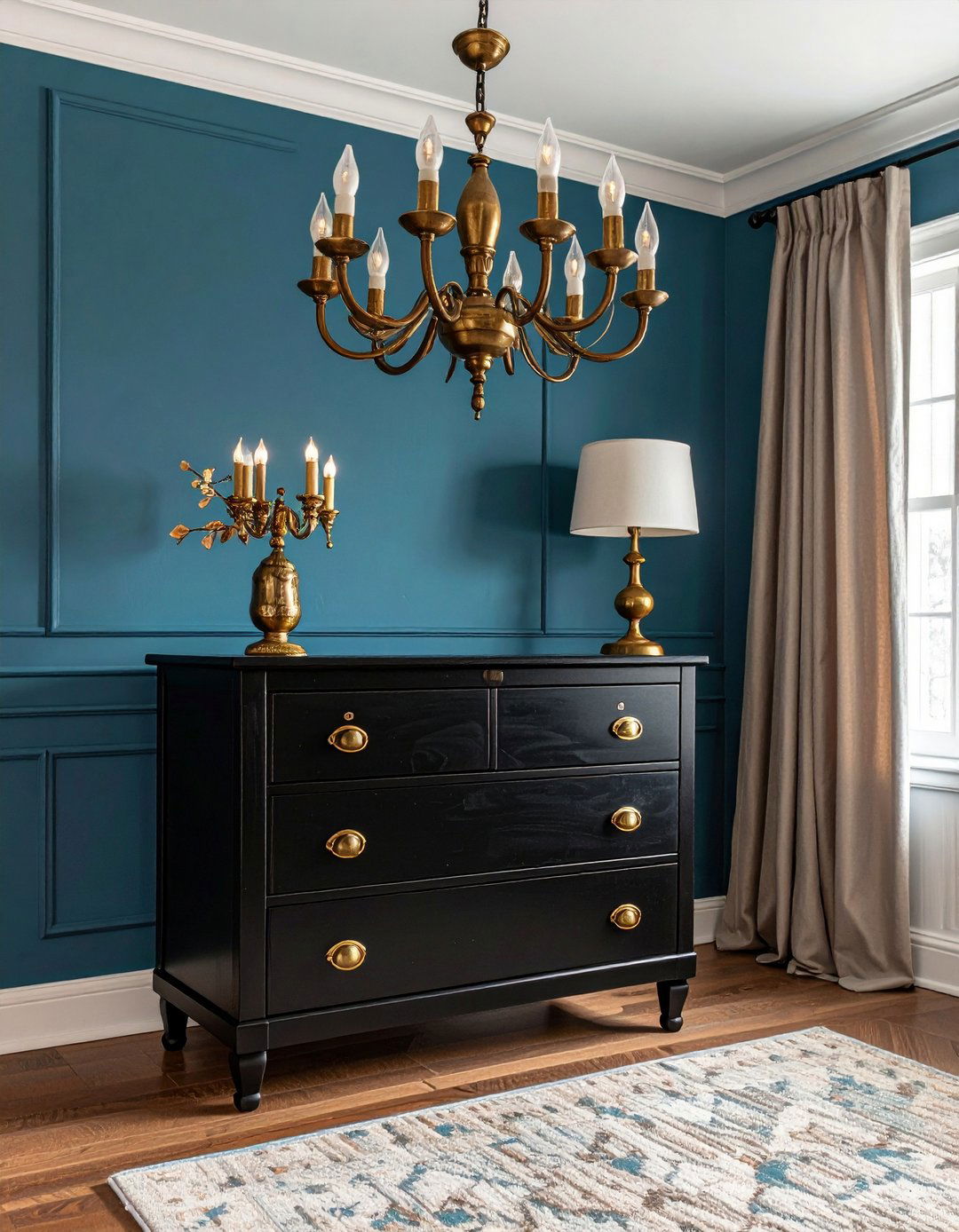
If you love a hint of luxury, mix black furniture with antique-brass pulls and a vintage-style chandelier on a dimmer. Polished metallics reflect soft ambient light, preventing the room from feeling cave-like. Secure all cords high and use shatter-proof LED bulbs to keep little explorers safe while you enjoy an elevated aesthetic that can transition into a sophisticated toddler space.
7. Textured Black Shiplap Nursery Walls

Vertical shiplap painted sable delivers cottage warmth and subtle pattern without adding color clutter. The grooves break up the surface so black feels inviting, not flat. Install boards with child-safe, zero-formaldehyde adhesive and finish with a wipeable satin topcoat—messy handprints clean off easily while the texture hides everyday scuffs.
8. Interactive Black Chalkboard Wall Nursery
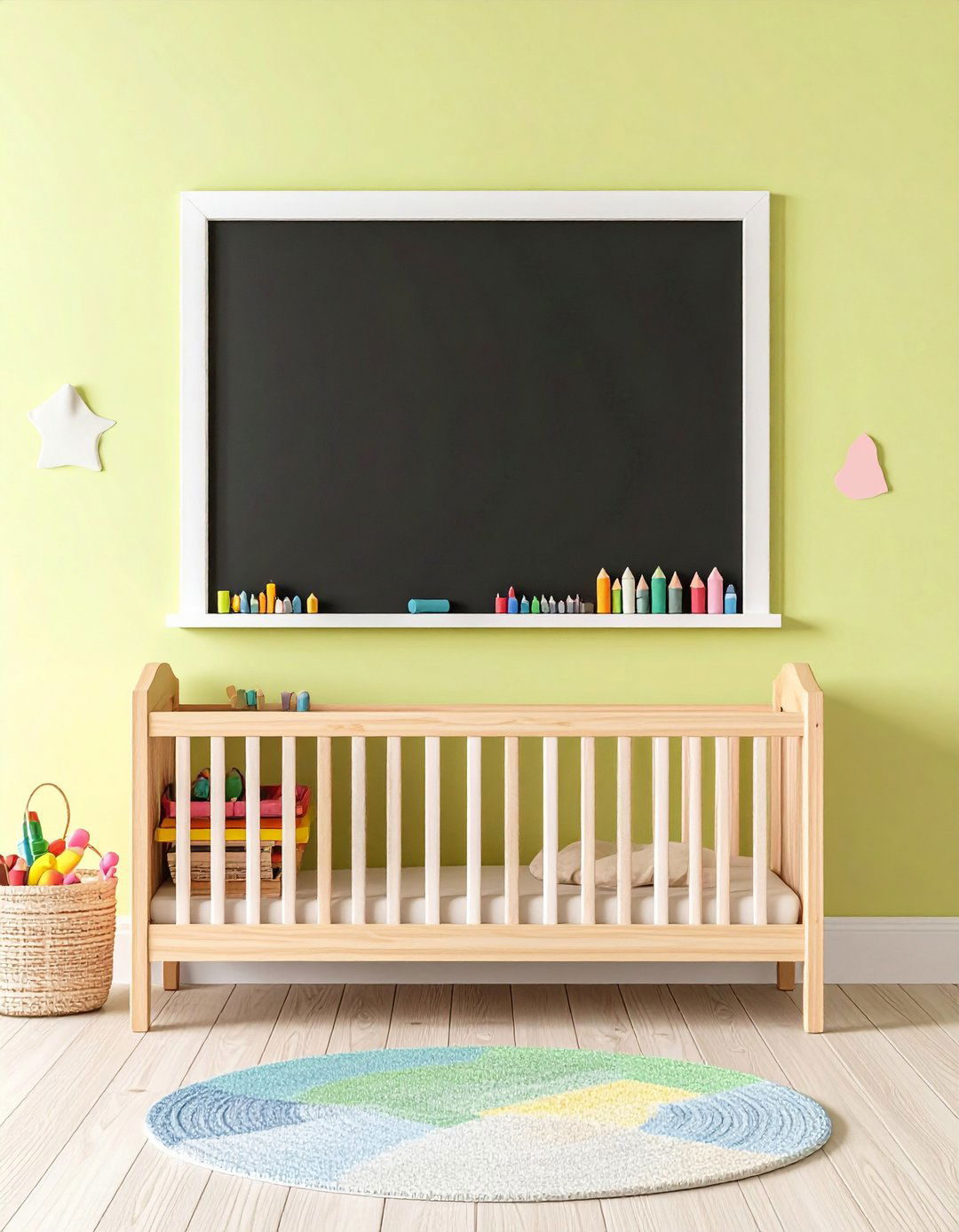
Dedicate one small wall to chalkboard paint so toddlers can eventually draw their own stories—just be sure the crib stays on another side to avoid dust inhalation. Modern formulas with low-VOC levels minimize fumes, and you can condition the surface with a full-chalk rub to reduce ghosting. A white picture-rail above keeps grown-up art safely out of reach yet visually connected.
9. Black Nursery Balanced by Natural Wood

Pair a jet-black dresser and crib with raw-oak shelving and rattan baskets for an earthy, grounded mood. Studies on nursery trends show that wood tones counter dark walls by reflecting warmer light and adding tactile interest. Keep finish consistency—either all matte or all satin—so the mix feels intentional rather than piecemeal.
10. Space-Saving Small Black Nursery Tricks
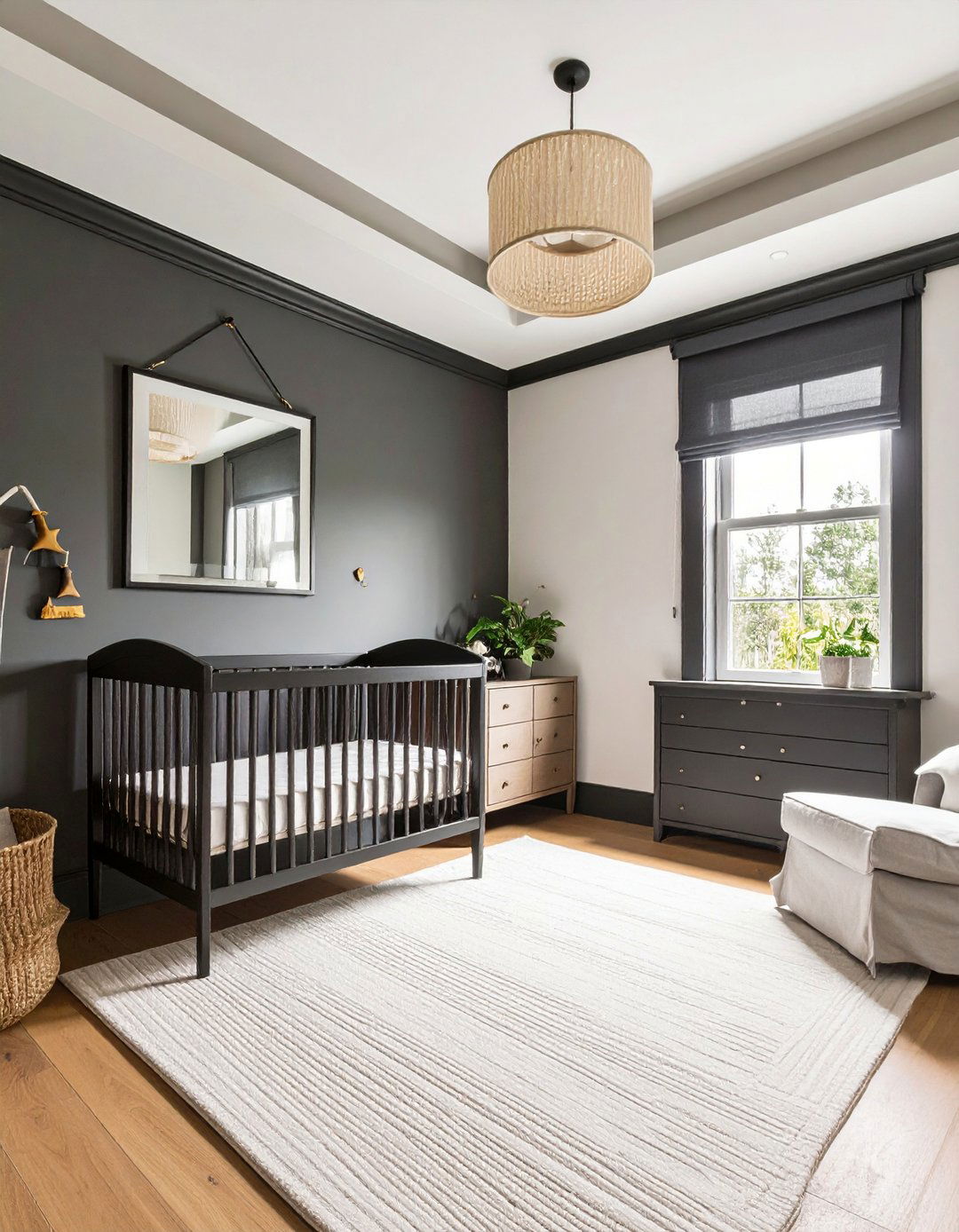
In compact rooms, paint only the ceiling and upper trim black to draw the eye upward, leaving walls pale to enlarge perception. Mirrors framed in charcoal expand visual depth while bouncing daylight around. Lightweight blackout roller shades disappear into slim valances, freeing wall space for storage shelves.
11. Gender-Neutral Palette for a Black Nursery
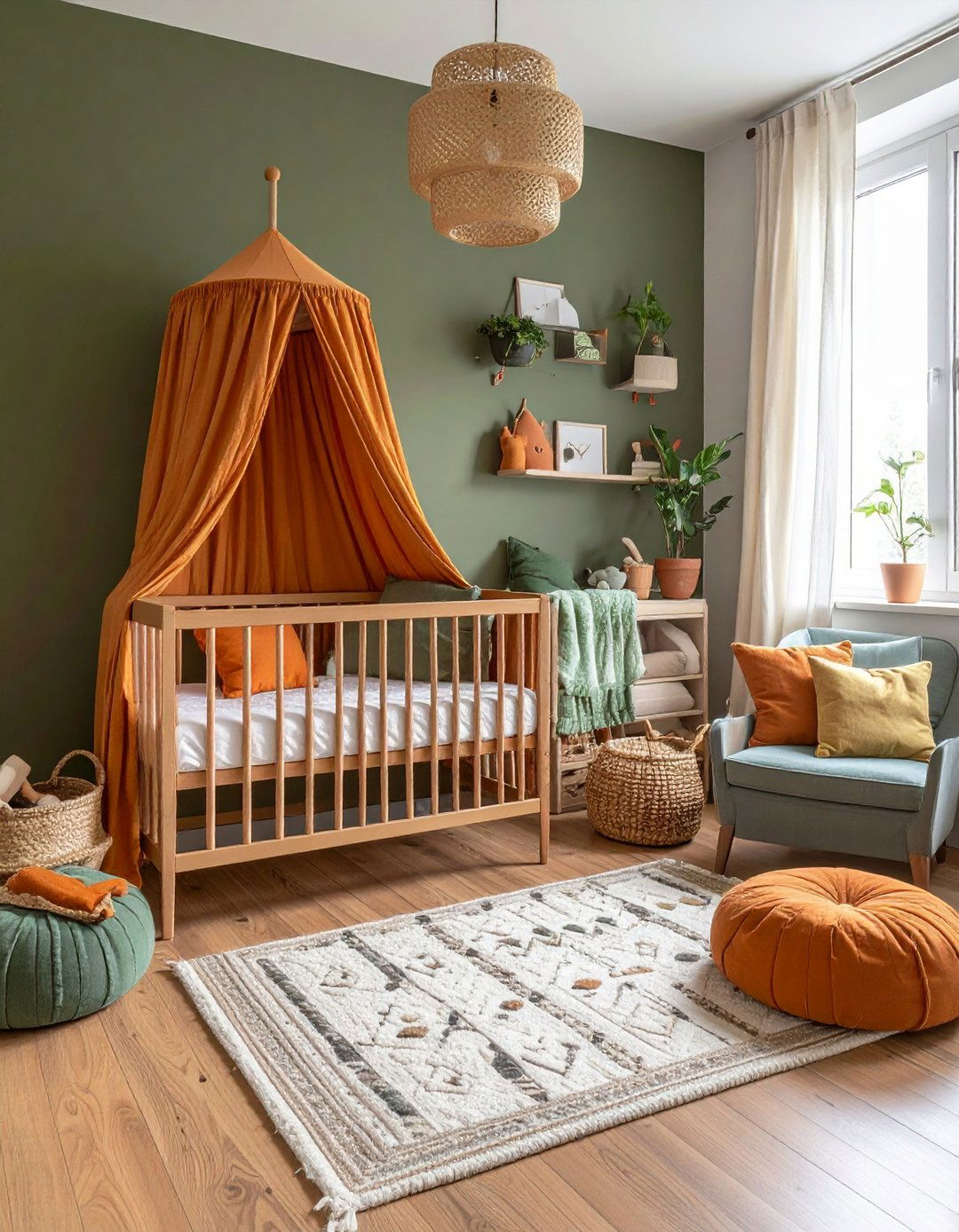
A black base feels effortlessly inclusive; layer in camel, sage, or terracotta for warmth without veering traditionally “boy” or “girl.” Textiles such as muslin swaddles in muted earth tones soften the scheme and let personalities shine later through toys and books. Parents on neutral-color forums praise this approach for staying relevant as siblings arrive.
12. Art-Deco Patterned Black Nursery
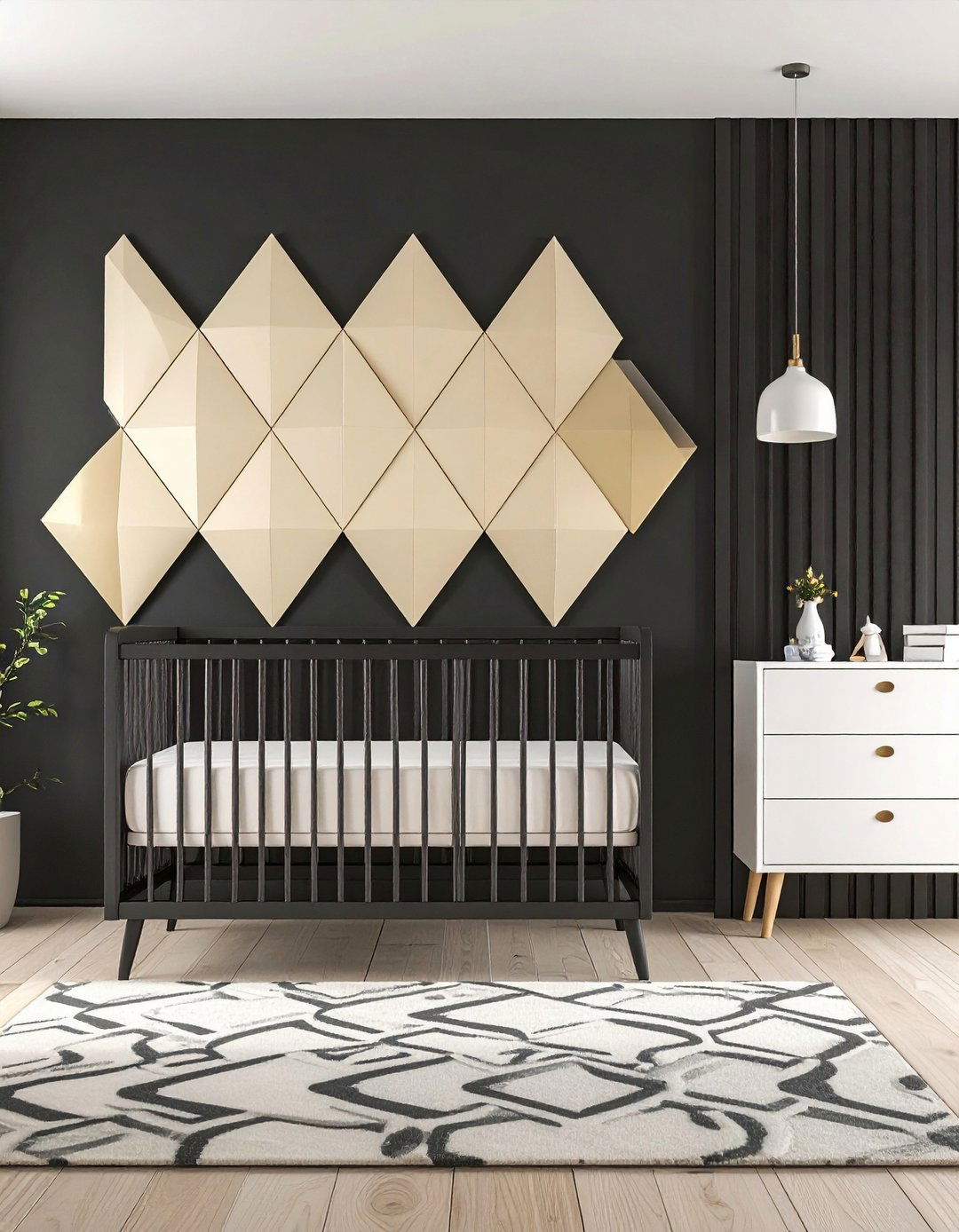
Introduce bold, repeating geometrics in cream against black walls for a timeless Art-Deco vibe. Removable wallpaper panels make installation beginner-friendly and future makeovers painless. Keep furniture streamlined—think straight-lined crib bars and sleek dressers—to let the pattern dazzle without visual overload.
13. Graphic Ceiling in a Black Nursery
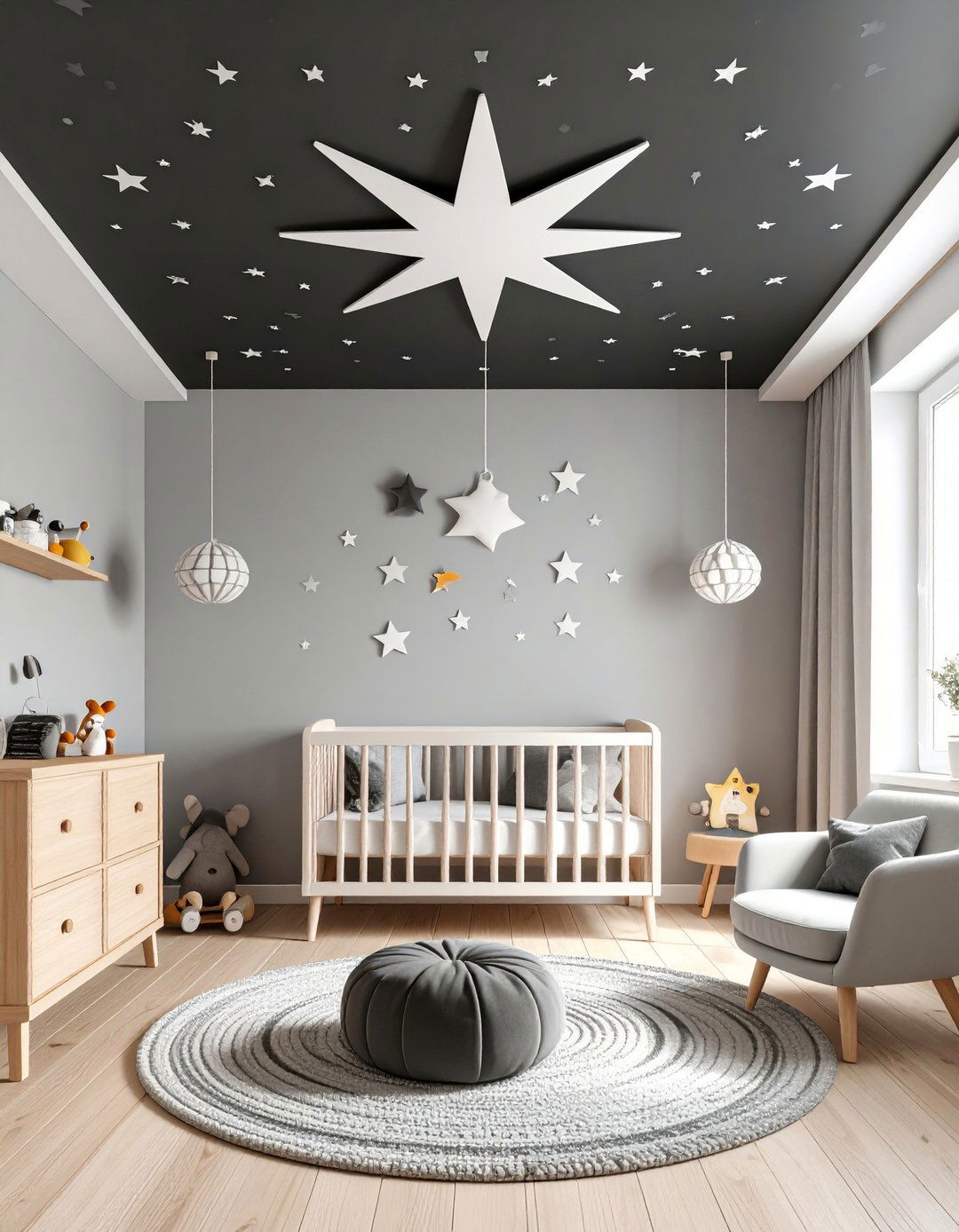
Flip expectations by leaving walls soft gray and painting the ceiling black with white starbursts or stripes. Babies spend a lot of time looking up, so this engaging overhead canvas offers visual stimulation without cluttering vertical sightlines. Use a flat, scrubbable paint formulated for humidity to avoid peeling around a humidifier mist.
14. Black Crib as the Nursery Centerpiece
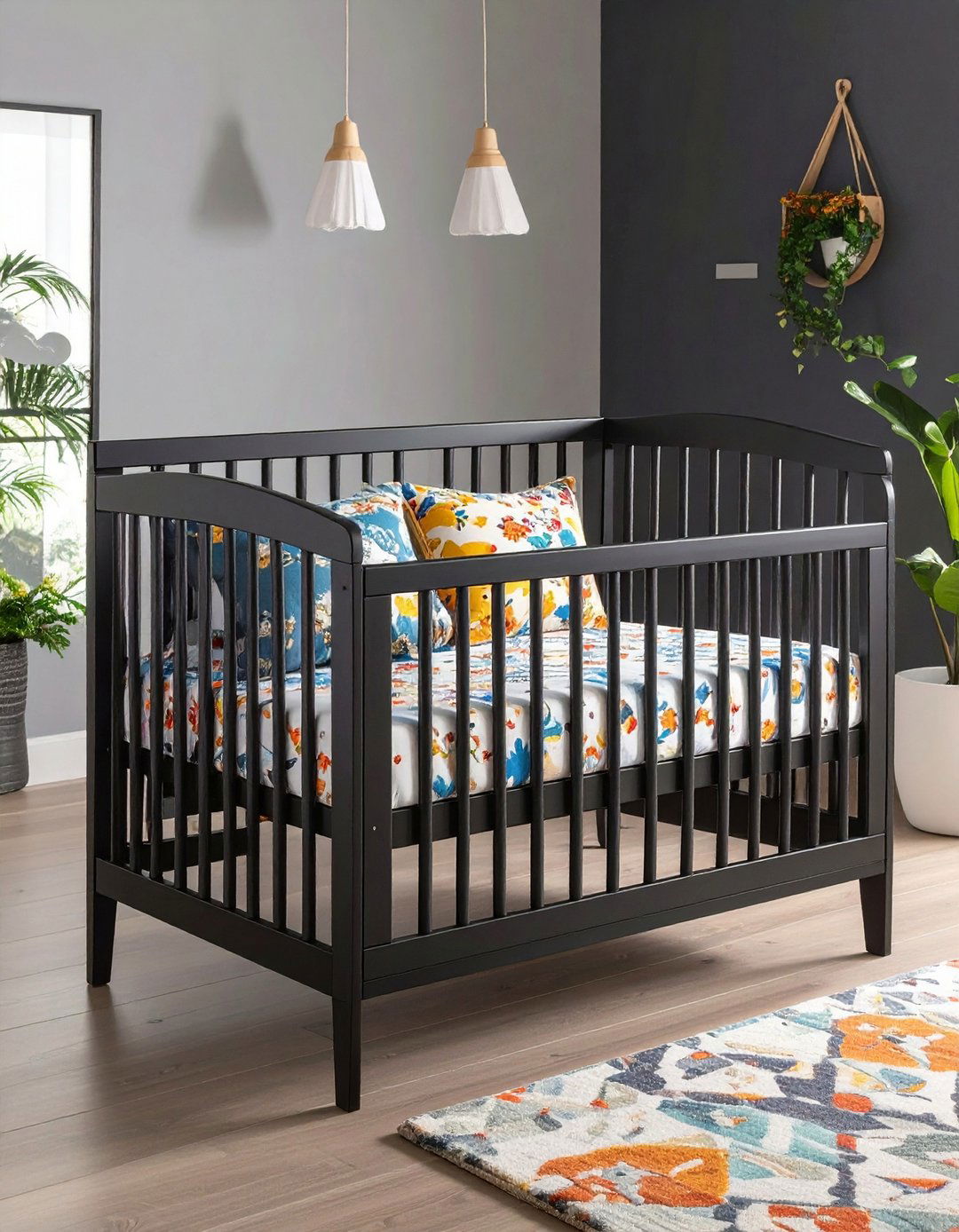
A matte-black crib instantly grounds the room and highlights colorful bedding. Confirm slat spacing no wider than a soda-can width and ensure hardware sits flush—safety guidelines remain the same regardless of finish. Coordinate a two-tone changing table so the dark frame feels integrated, not isolated.
15. Choosing Matte vs. Satin Black Finishes in the Nursery
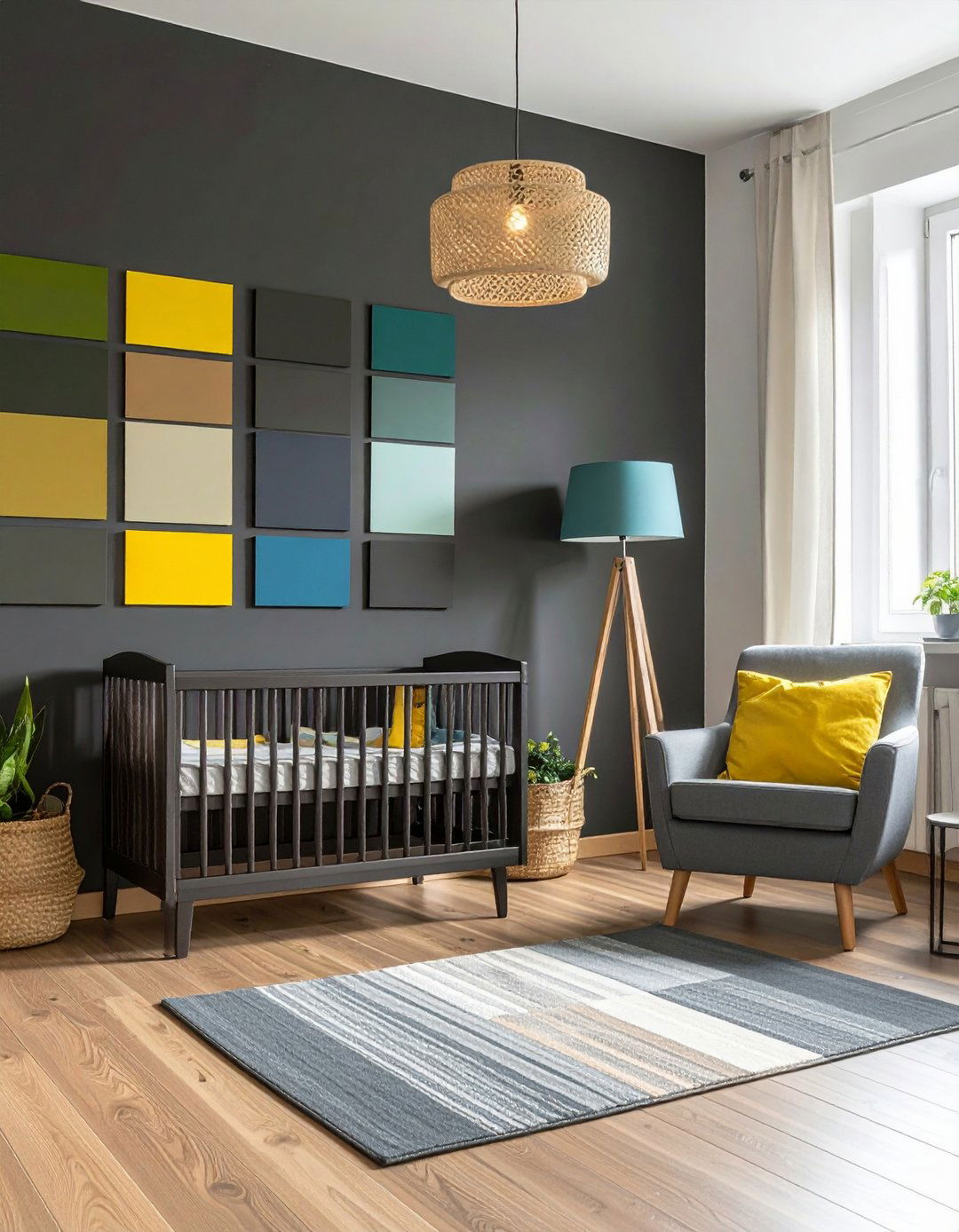
Matte hides imperfections and diffuses light for a cozy cocoon, whereas satin reflects more illumination and wipes clean easily—especially helpful near feeding zones. Experts suggest testing swatches at different times of day; undertones and sheen shift with sunlight, affecting mood and brightness.
16. Safe Low-VOC Black Paint Strategy for Nurseries
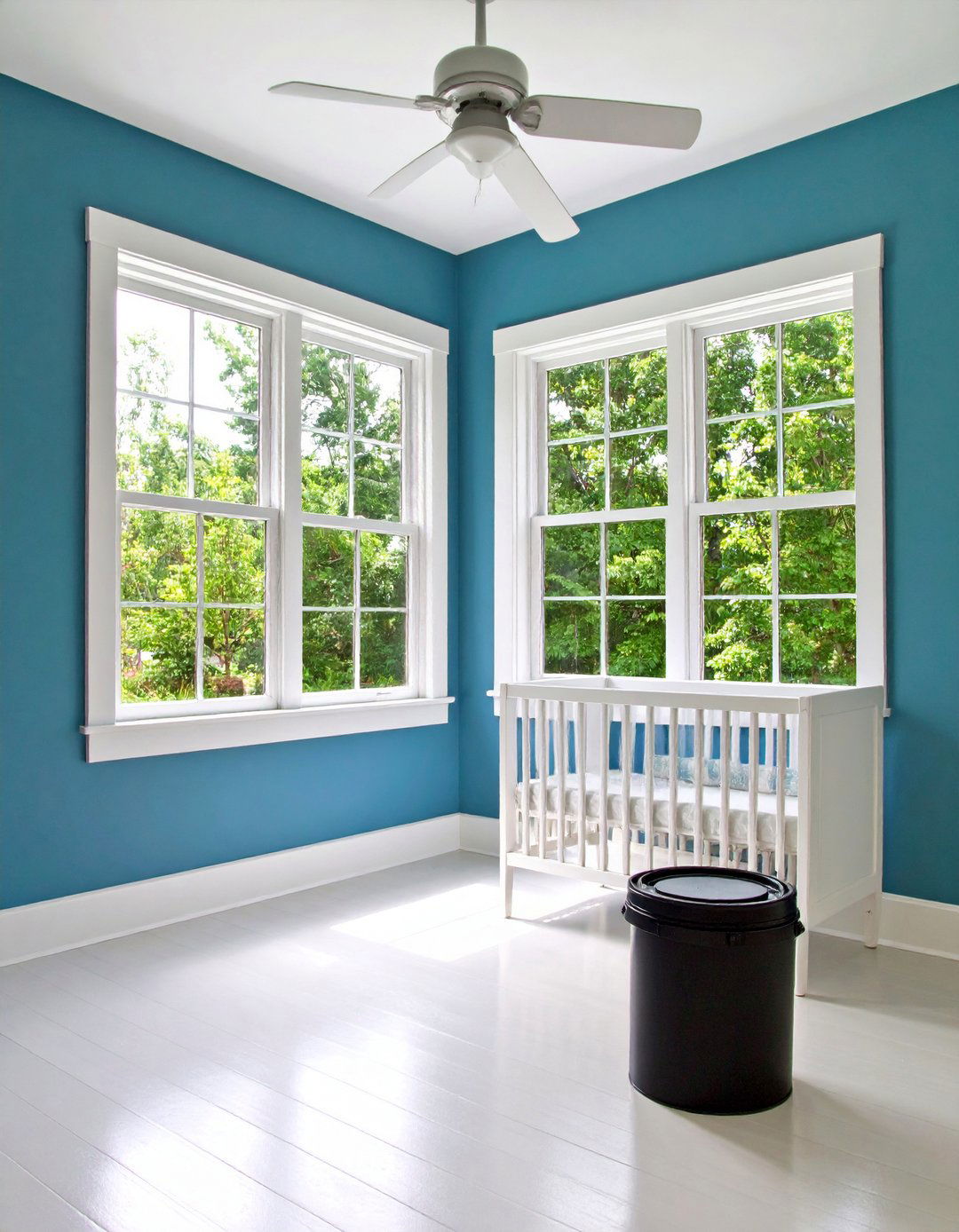
Prioritize zero-VOC, APE-free formulas certified for low chemical emissions. Allow at least two days of ventilation with fans and open windows before moving furniture back. Eco-labelled primers in matching hues cut down on coats, reducing both labor and airborne particles.
17. Light Control with Blackout Elements in a Black Nursery
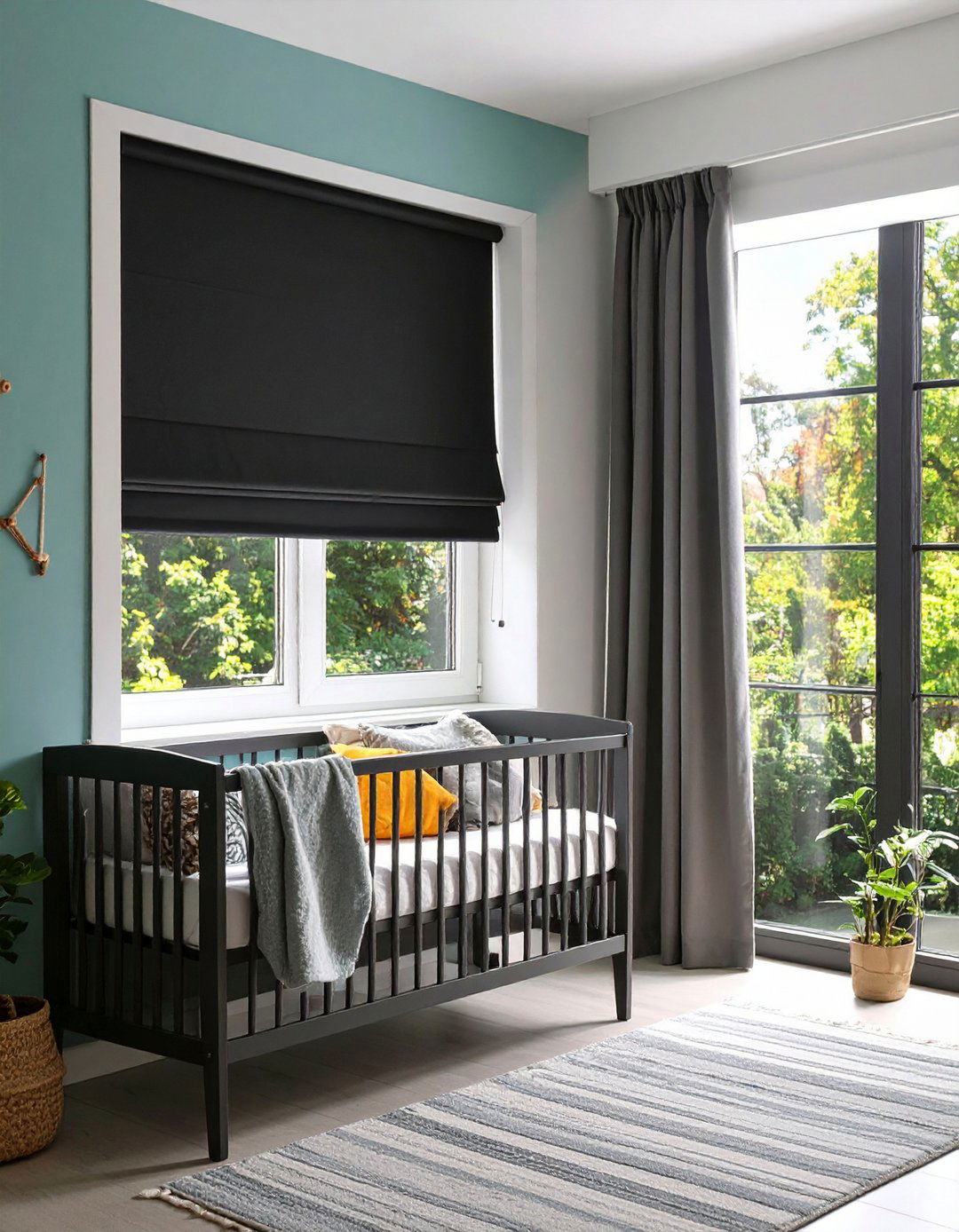
True blackout roller shades or curtains harmonize with dark décor while supporting consolidated infant sleep. Research links darker sleep environments to improved melatonin rhythms, but ensure fabrics carry child-safe certifications and remain securely tethered to prevent grasping hands from pulling them down.
18. Night-Light Projector in a Black Nursery
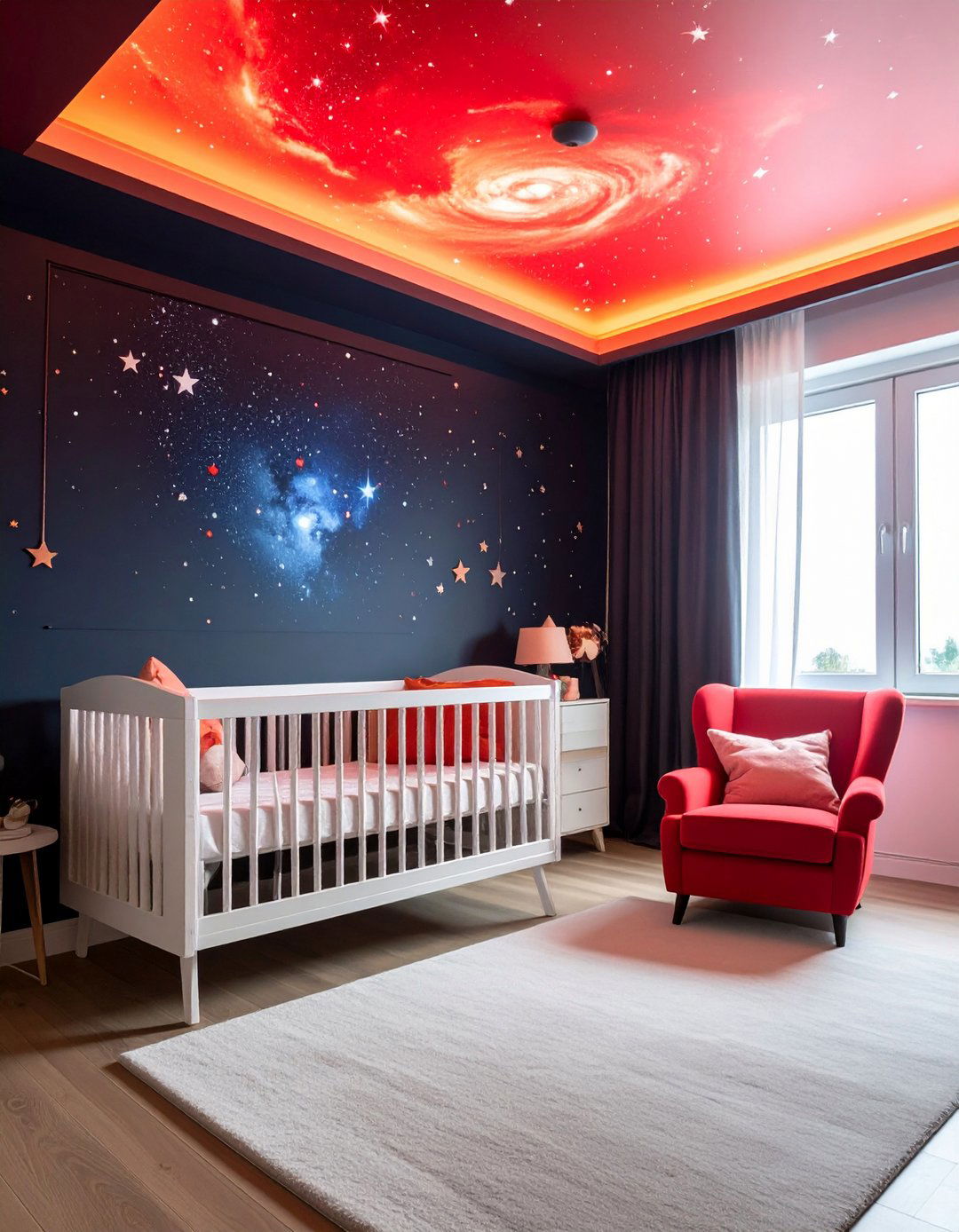
Black walls amplify star-projector visuals, turning bedtime into a gentle planetarium show. Choose models with red-tone night settings to maintain melatonin production, and place units on a high shelf so curious fingers can’t access hot bulbs or batteries.
19. Pops of Color in a Primarily Black Nursery

One or two saturated accent hues—mustard pillows, coral artwork—shine like jewels against charcoal surrounds, giving visual points of reference for developing eyes. Rotate small décor items seasonally to refresh energy without repainting; neutral bases make swapping effortless.
20. Future-Proof Black Nursery That Evolves
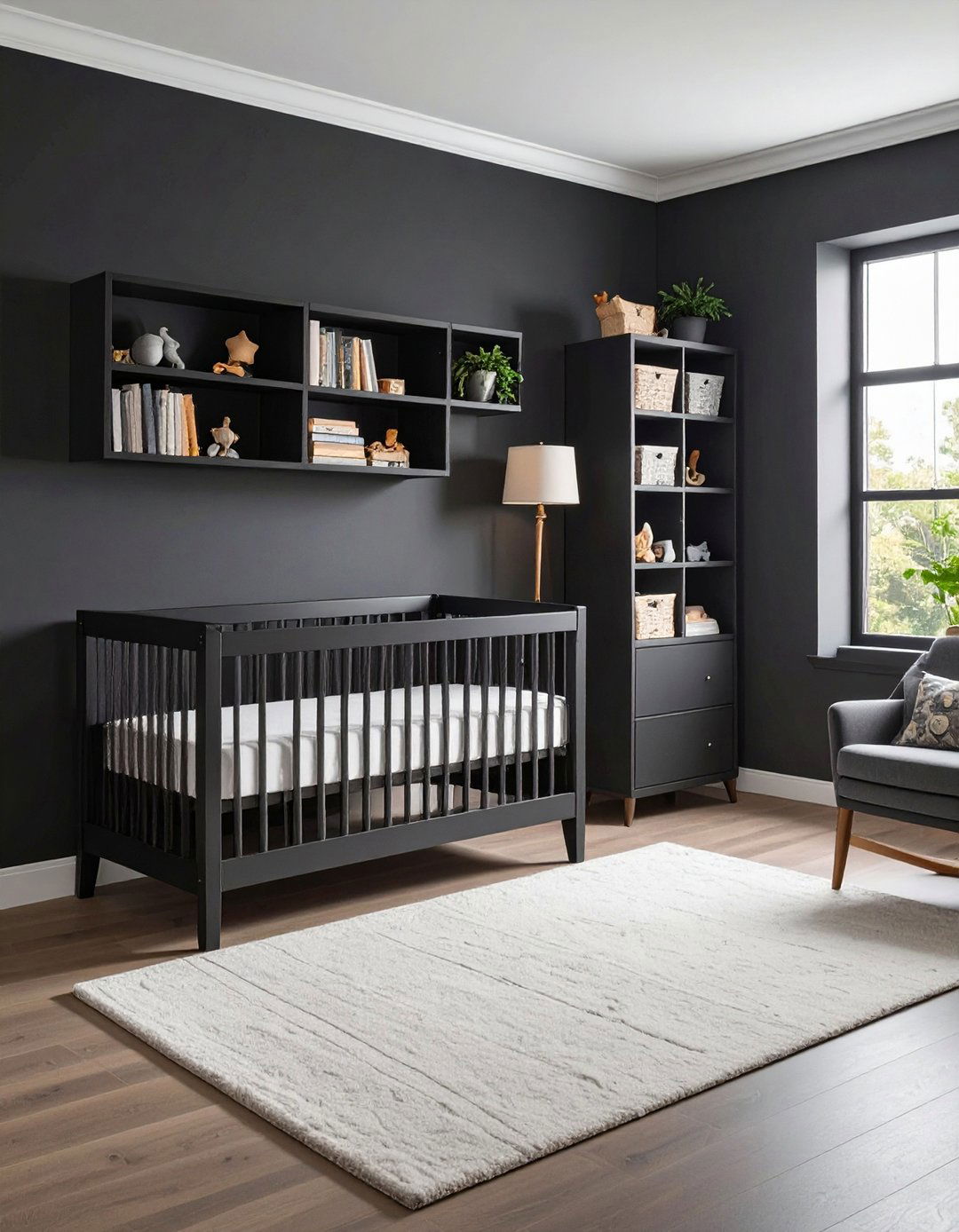
Because black transcends age trends, the same backdrop easily shifts from newborn nook to homework hub. Select modular storage cubes, adjustable bookshelves, and convertible cribs so layout grows with milestones. Neutral investment pieces reduce waste and keep redecorating costs low over the years.
Conclusion:
Embracing black in the nursery merges sophisticated style with developmental benefits: high-contrast visuals support early vision, darker sleep settings can foster better rest, and a timeless palette grows gracefully alongside your child. With careful paint selection, safety-minded furnishings, and thoughtful layering of textures and light, a black nursery moves from daring idea to warmly nurturing sanctuary—ready for story time, sweet dreams, and every joyful milestone in between.




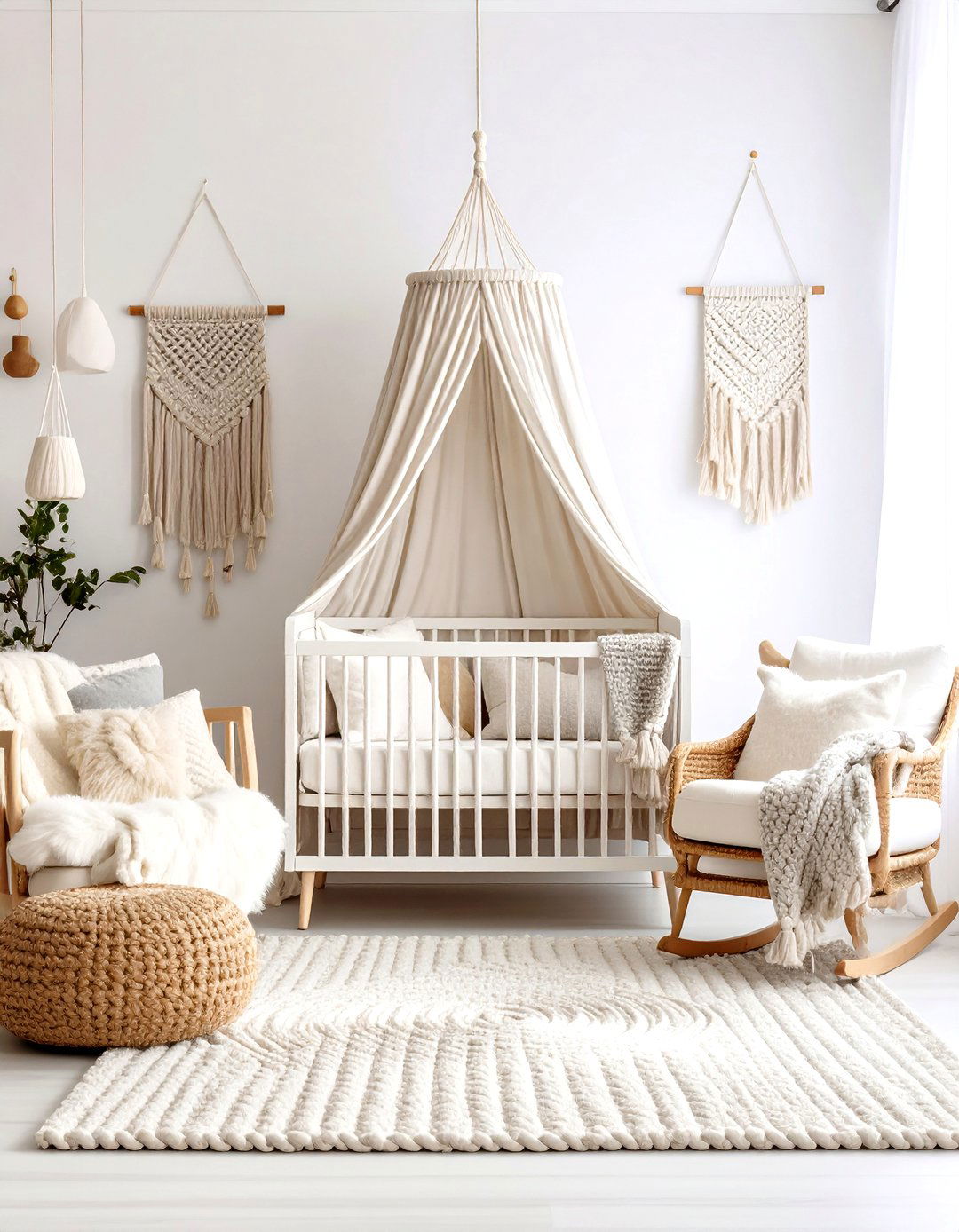
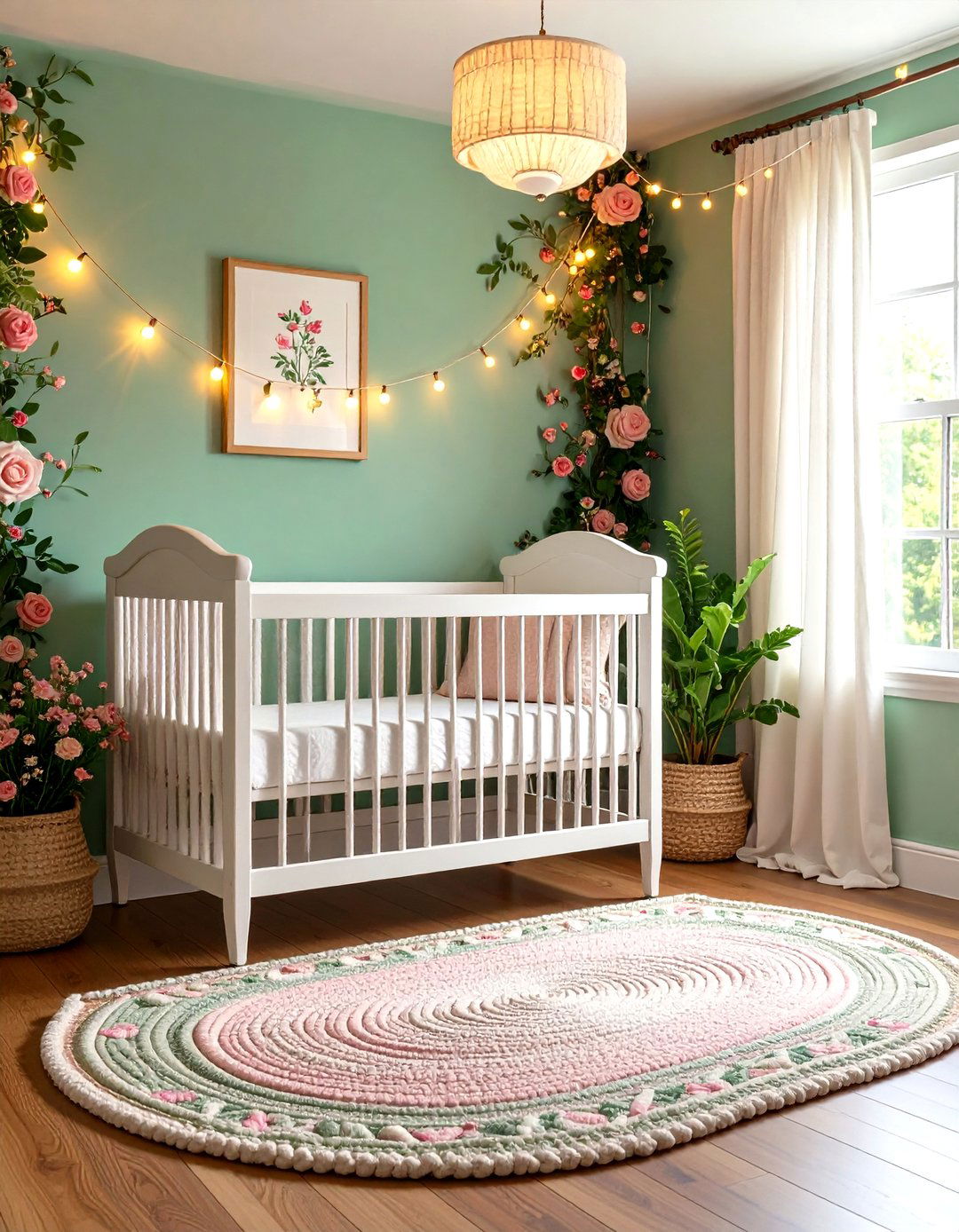
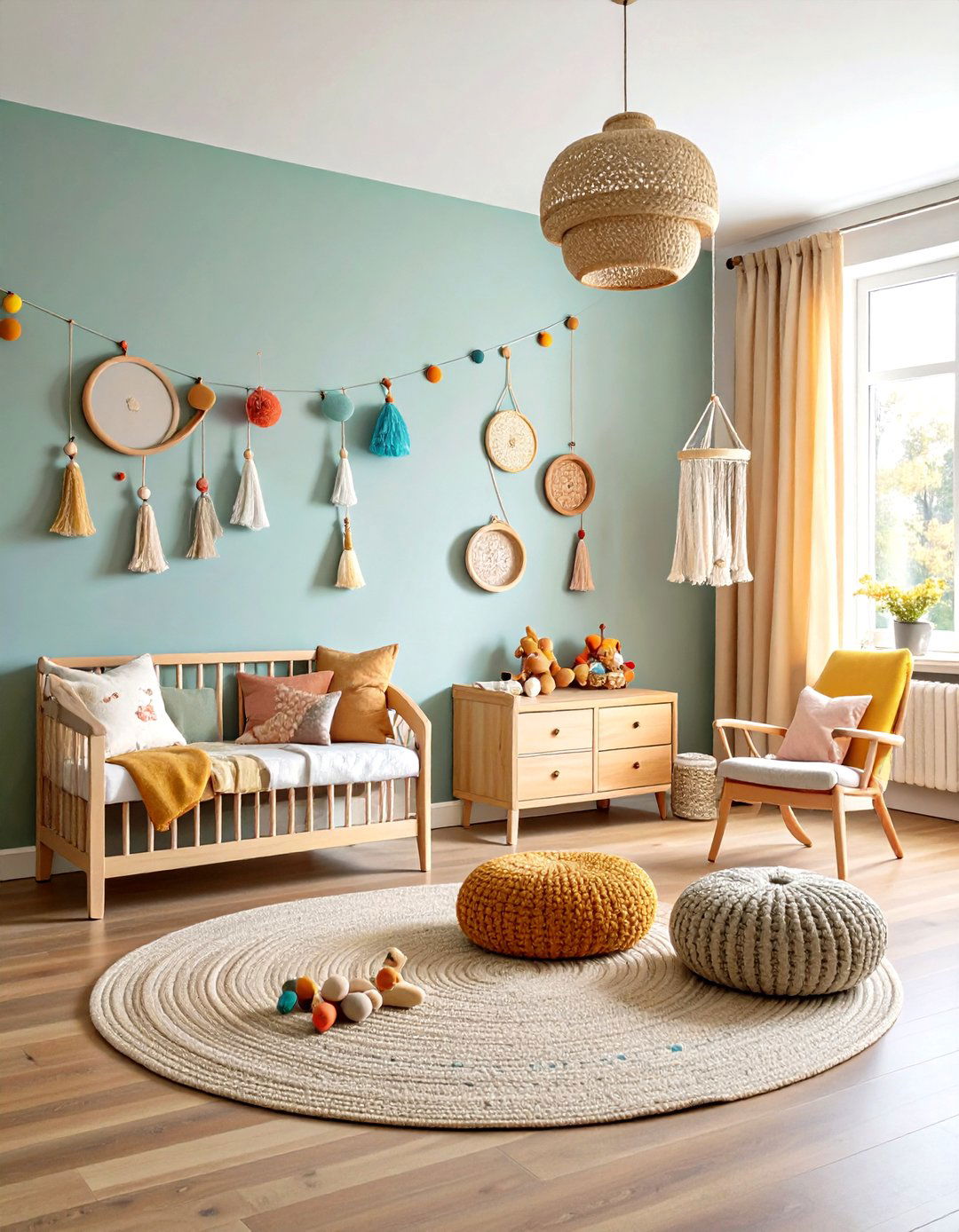
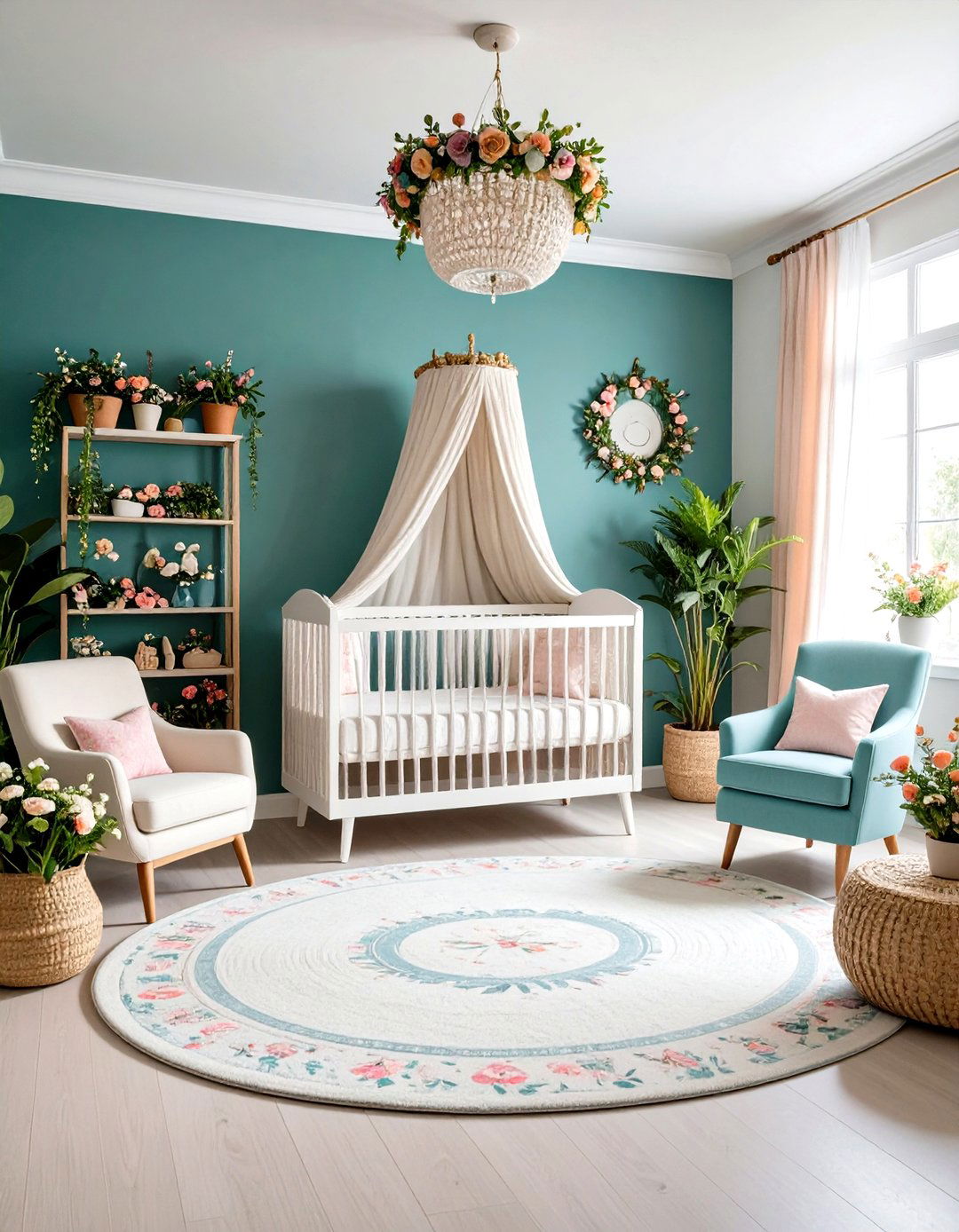
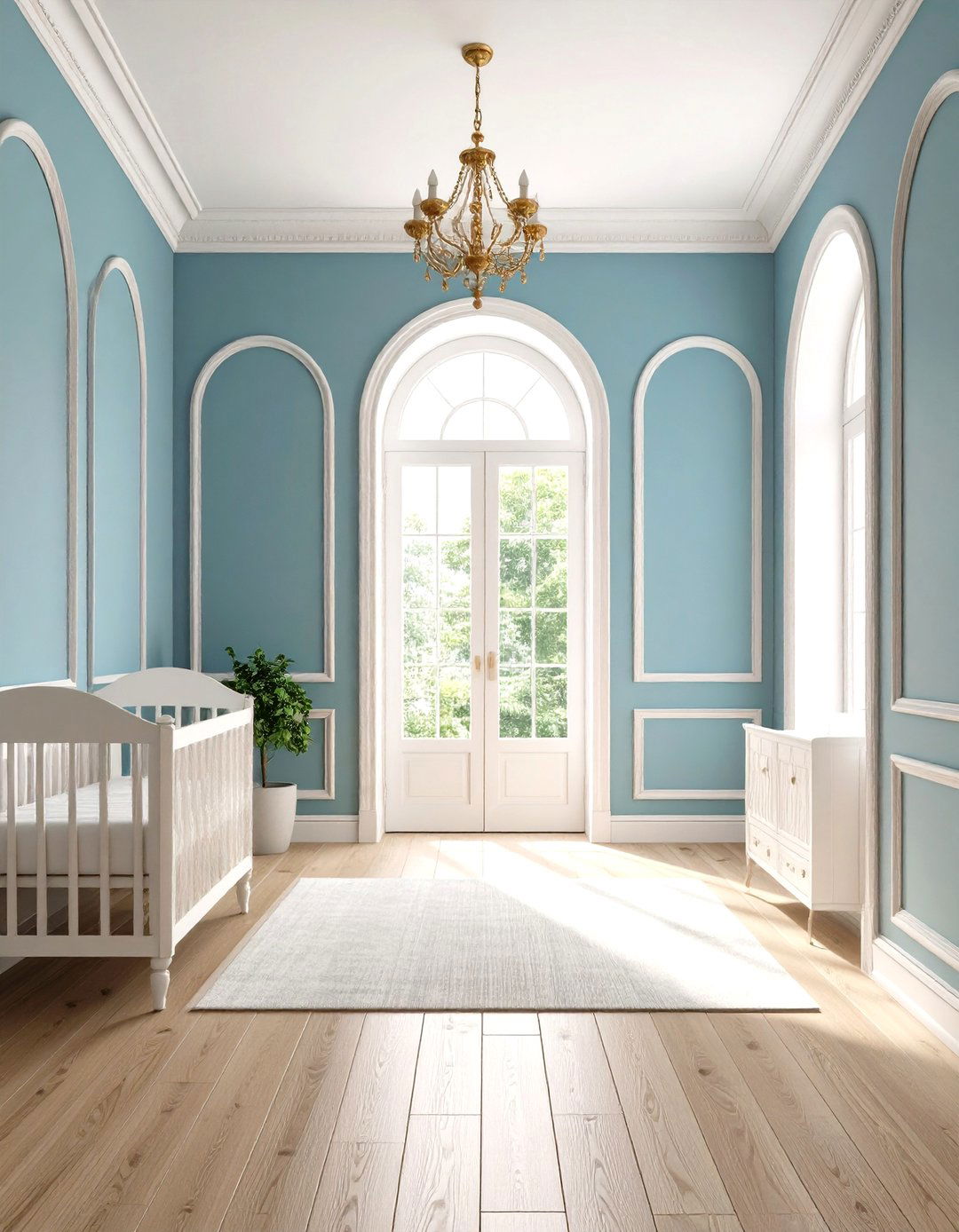
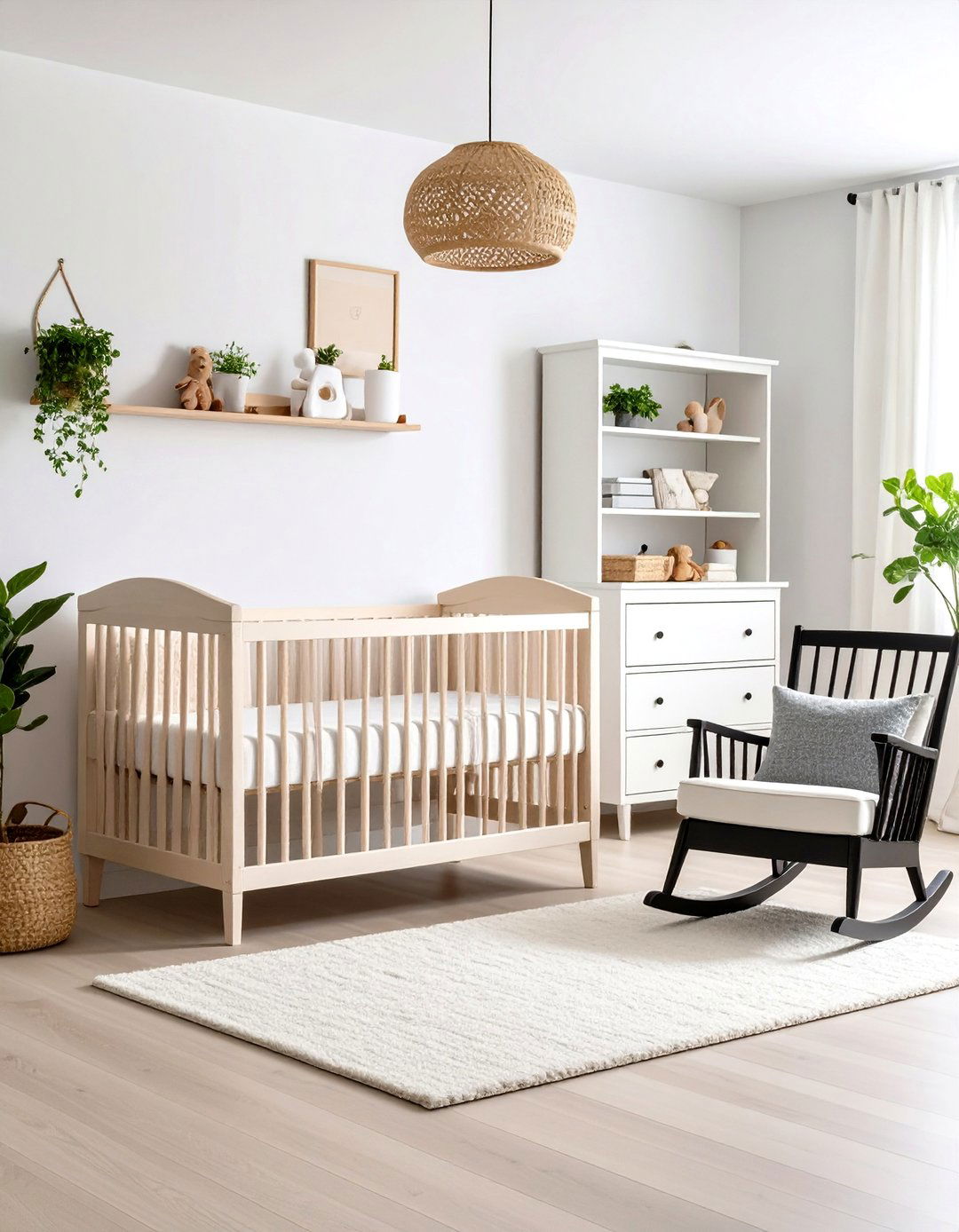
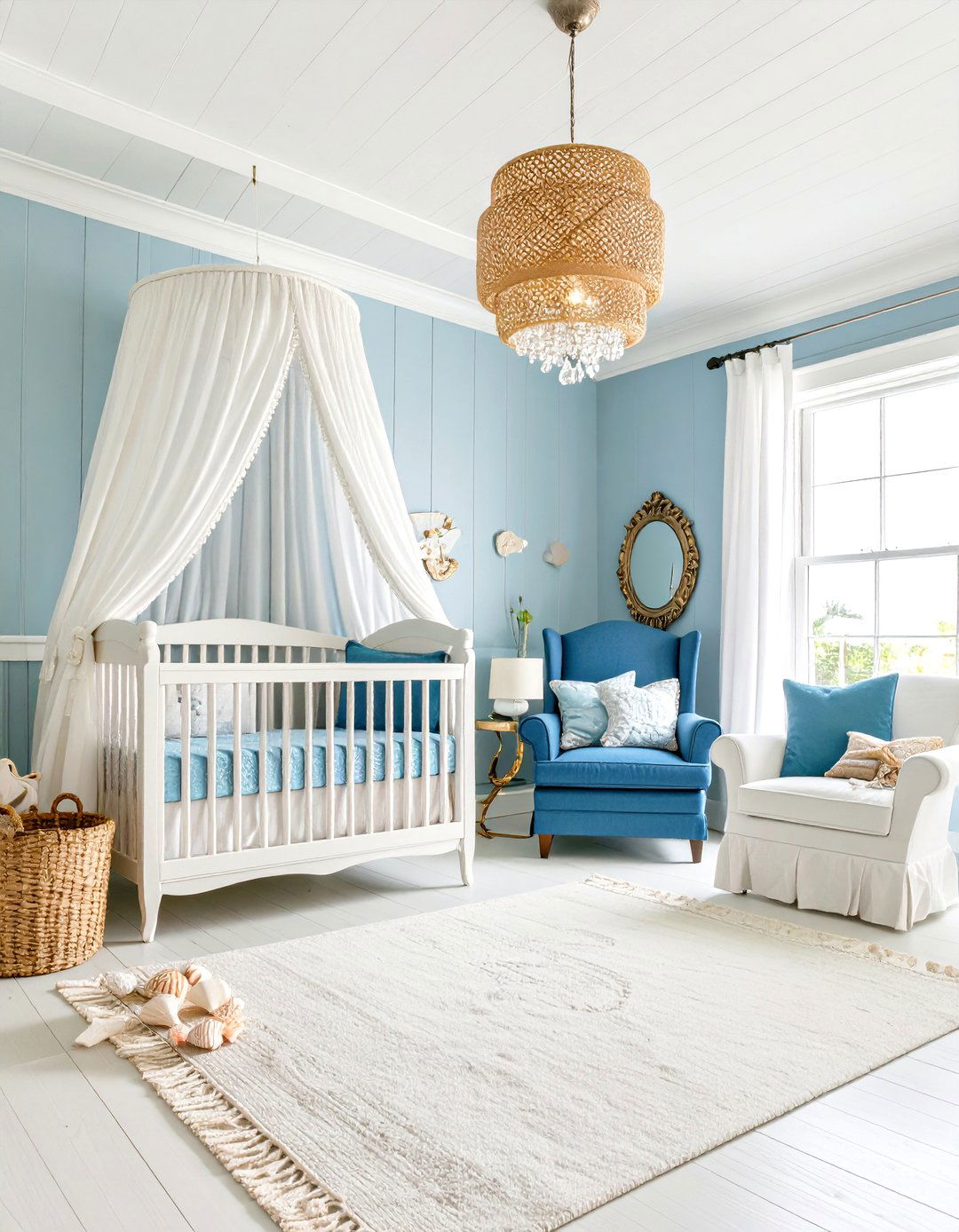
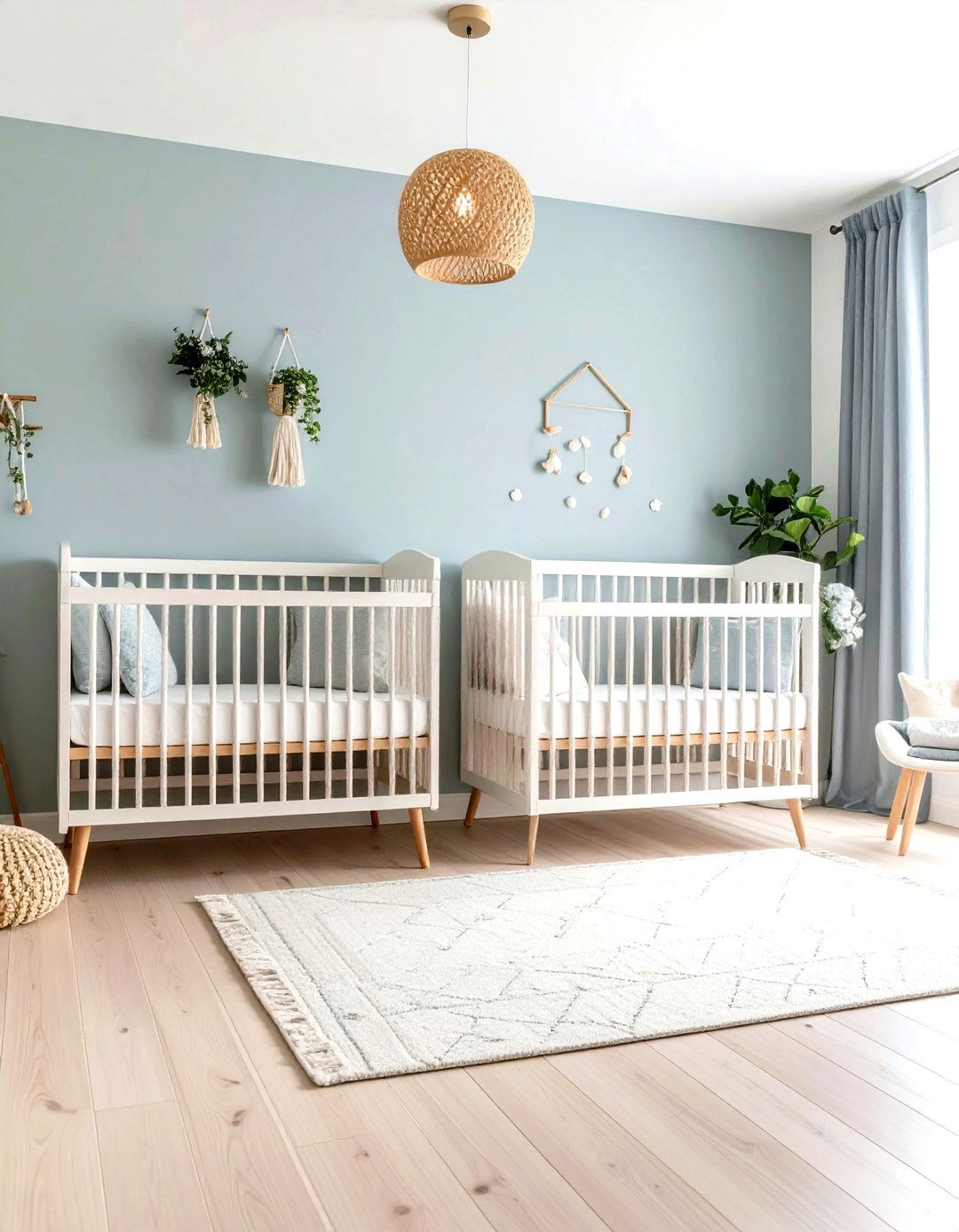
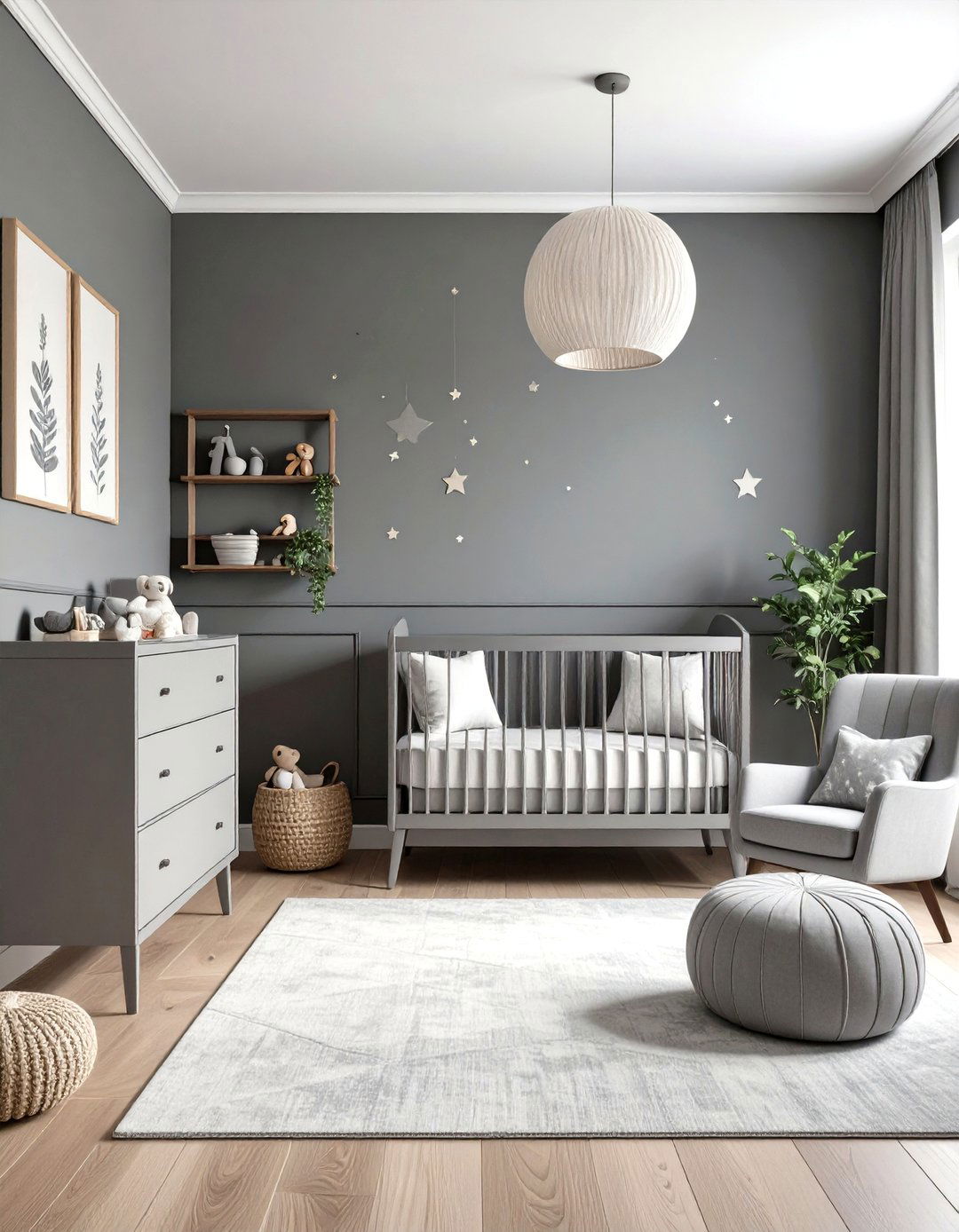
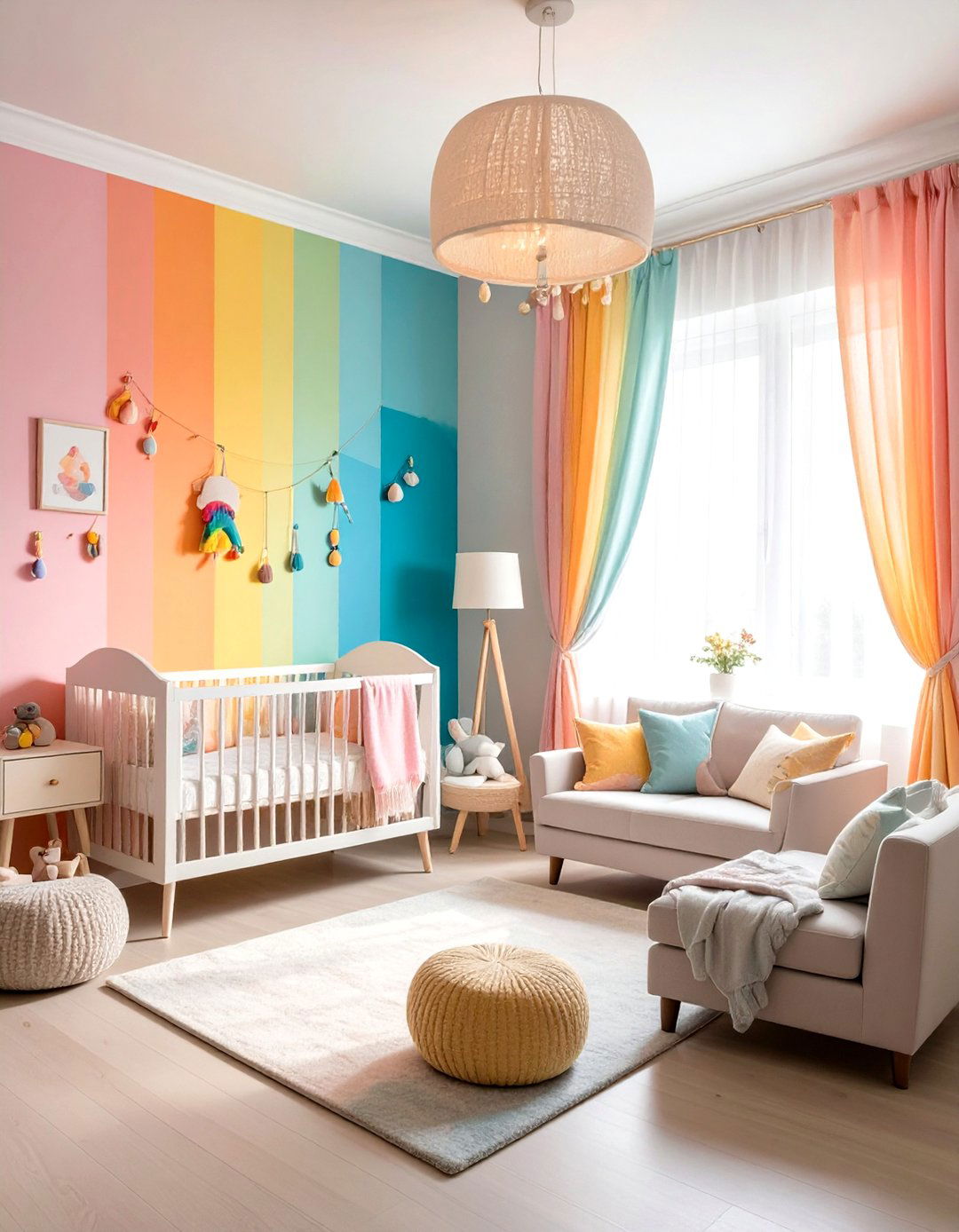
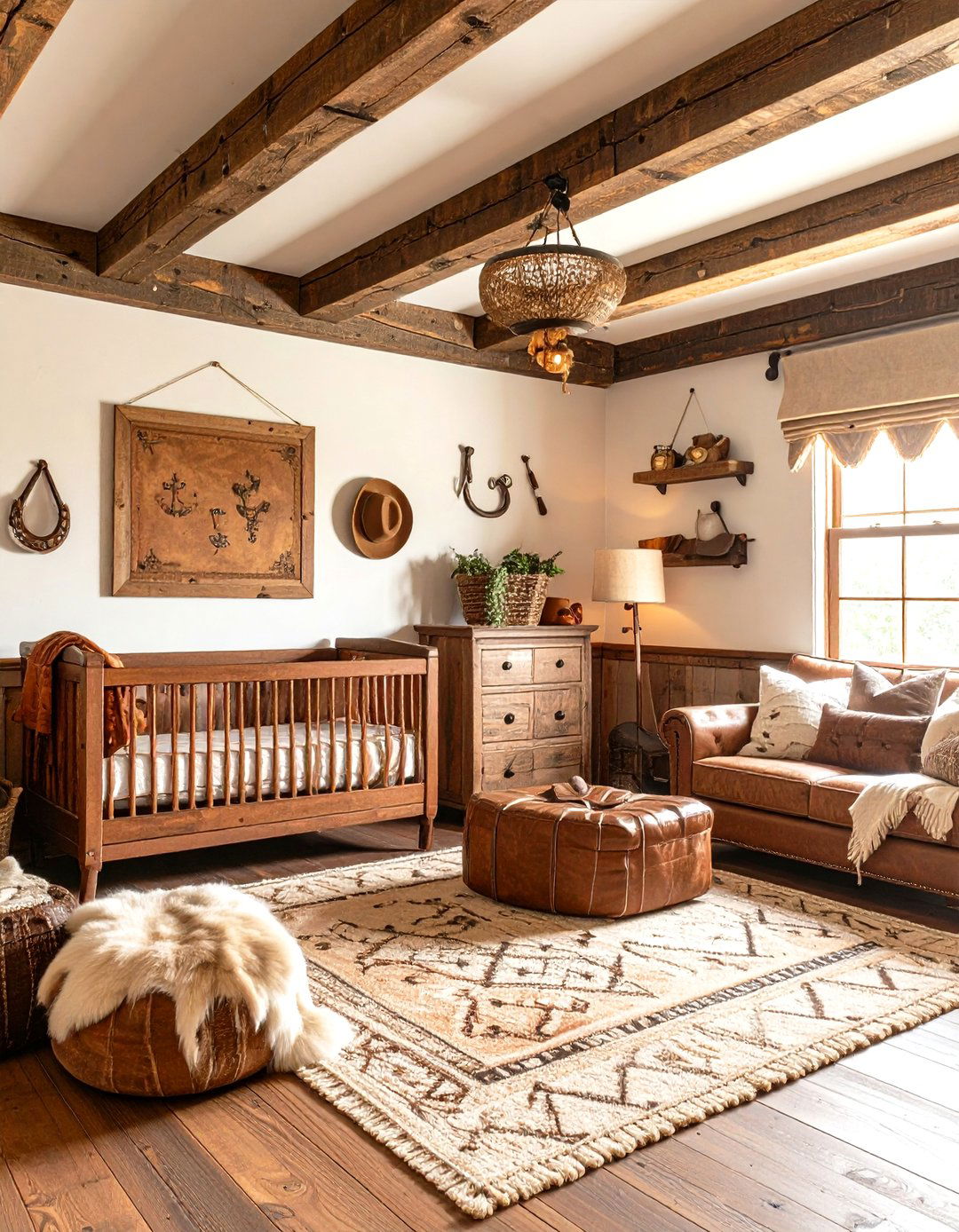
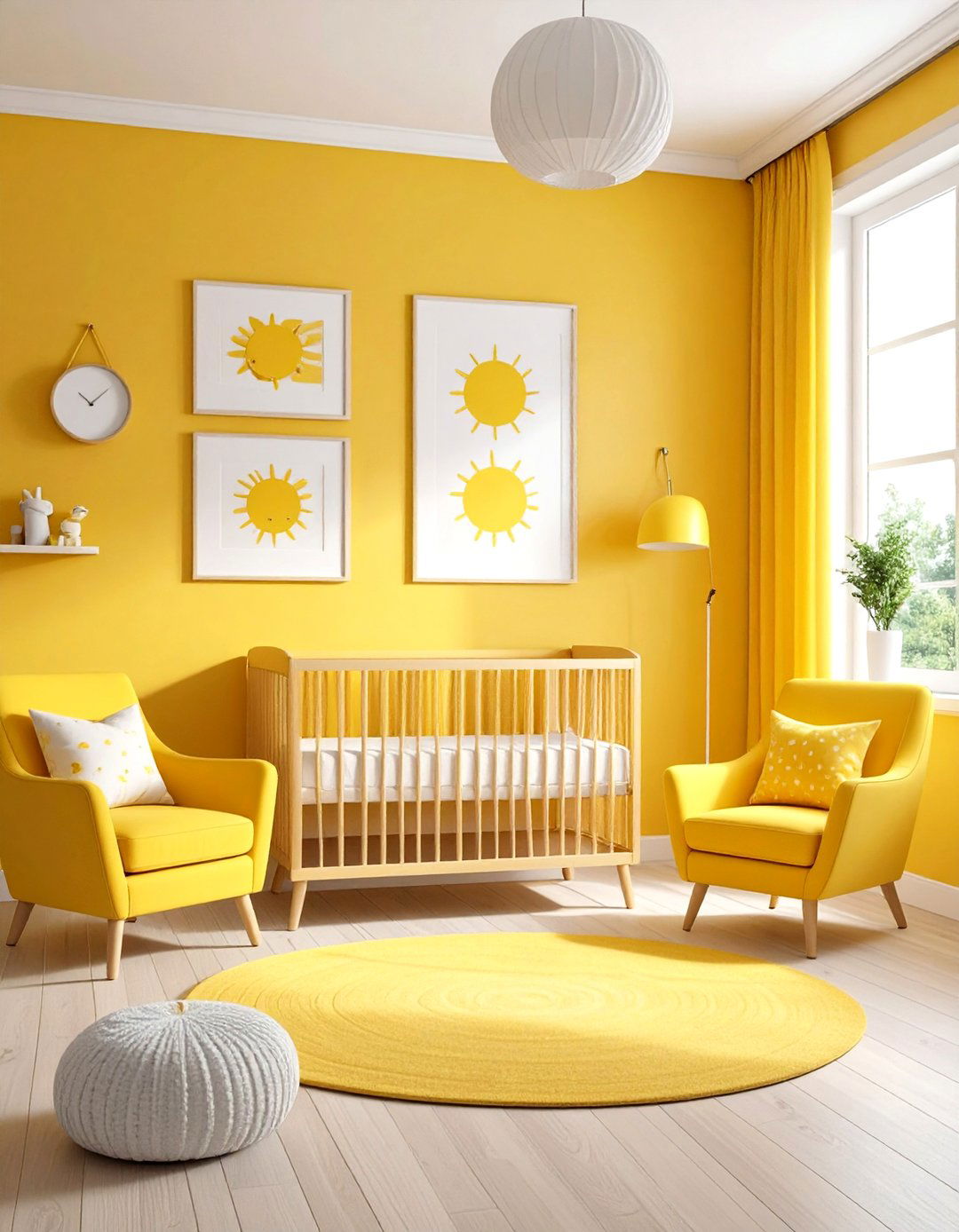
Leave a Reply